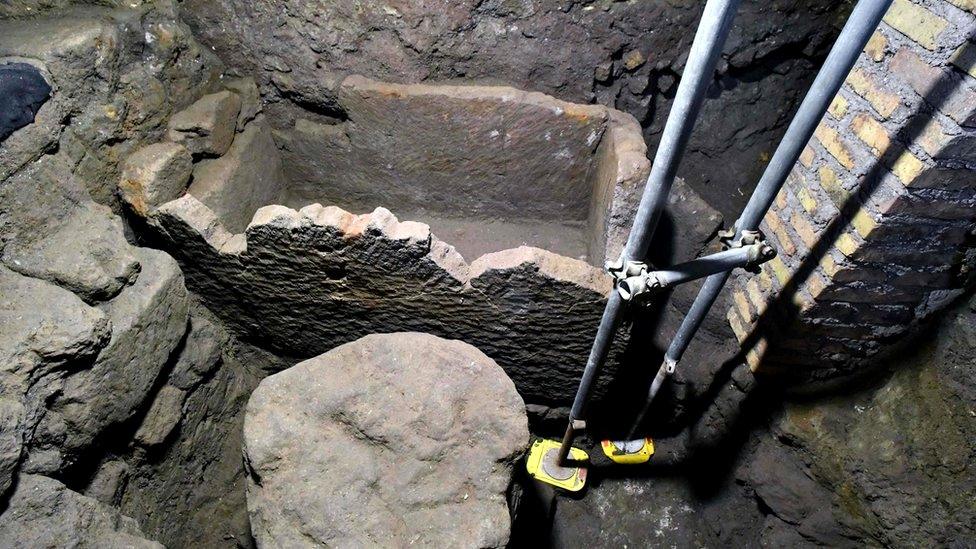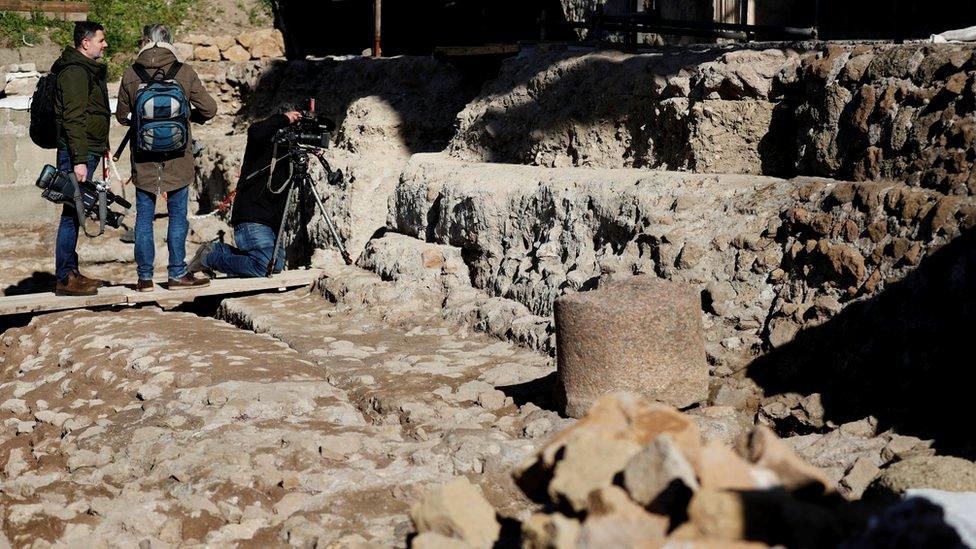Romulus mystery: Experts divided on 'tomb of Rome's founding father'
- Published

An ancient tomb that has been linked to Rome's legendary founder, Romulus
A sarcophagus discovered in the remains of an ancient temple in Rome is causing a stir among historians who cannot agree if it belongs to the Italian city's legendary founder, Romulus.
The stone tomb, along with circular altar, dates from the 6th Century BC.
According to legend, Romulus founded the city on Palatine Hill in 753 BC after killing his twin brother Remus.
But experts are divided over whether the empty tomb can be linked to Romulus - or if the brothers even existed.
The discovery was unveiled by Italian archaeologists at the Roman Forum on Friday.
Historians said that while the find in the heart of the city was significant, it represented a symbolic rather than a real grave.
They argue that even if Romulus had existed, there would be no body in the tomb because - depending on your sources - he was either raised to heaven as the Roman god Quirinus, or was torn to pieces by senators envious of his power.
"This is not the tomb of Romulus, but is a place of memory where the cult of Romulus was celebrated, a cenotaph," Alfonsina Russo, director of Rome's Colosseum Archaeological Park, said.

The entrance to the underground shrine in Rome believed to be dedicated to Romulus
Archaeologist Patrizia Fortini said that while it was wise to exercise caution, the idea that the tomb may be linked to Romulus was "a suggestion based on ancient sources".
"[Stories] speak of the presence of the tomb of Romulus in this area of the Roman Forum," she told AFP news agency.
Fabled characters Romulus and Remus were said to have been the twin sons of the god Mars and priestess Rhea Silvia.
According to myth, the brothers were nursed by a she-wolf.
Romulus is said to have set out an area around Palatine Hill to mark the city's boundary.
One element of the Romulus and Remus story has Remus defying his brother by leaping over the settlement's boundary walls - an act that cost him his life.
"All myths and legends have an element of truth," Ms Russo added. "I am convinced that there was a founding hero."
The newly discovered temple will now be the subject of a thorough archaeological investigation, and is expected to open to the public in two years.

You might also be interested in:
'Recipe' for creating mummies in ancient Egypt revealed